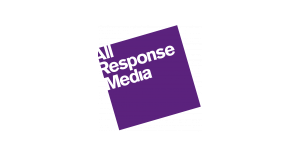On Wednesday 9th June, Thinkbox revealed their latest update on CFlight – a cross broadcaster collaboration project that has taken over 2 years, to bring combined post-campaign reach and frequency reporting across linear TV and broadcaster VOD (BVOD). Its much-anticipated launch has been picked up in industry media – promising ground-breaking developments to AV reporting, covering more than 98% of broadcaster exposure in the UK.
CFlight promises to mainly answer 3 questions:
- How many people did my TV and BVOD campaign reach?
- What is the average frequency of the campaign?
- What is the reach contribution for the BVOD element of the campaign?
It uses Peach to track all instances for creatives – an answer to the way of measuring previously elusive BVOD impacts. Then, CFlight combines BVOD traded impressions into converting traded impressions into actual viewers by device (i.e. an impression on mobile or tablet likely to only be 1 viewer, whereas an impression on a TV likely to be at least 2), making it comparable to BARB’s TV impacts (which measures actual viewers). By deduplicating BVOD audiences across platforms and suppliers, they will be able to report a unified, accurate reach number.
But, what will it actually change?
Well, at first, very little. The initial launch will only be reporting total reach and frequency for TV and BVOD combined vs adults (although there are plans to provide different audiences down the line). Other developments in the pipeline include breaking down reach and frequency by device, region, and even broadcaster to see with saleshouse is giving the most unique reach through BVOD. The project itself does overcome some issues in reporting, with broadcasters previously reporting their own impressions to different completion rates, but they hope to move to only measuring 100% completed impressions, raising the bar for all BVOD.
Whilst BARB gives transparent and extensive reporting on all brands – allowing us to track closely what competitors are doing, CFlight will be limited to only your own campaigns. Another shortfall is that it excludes Sky Adsmart, and there are no plans to extend into channels such as YouTube. Moreover, there are no plans to share raw data with any third parties – meaning that this project will be limited to reporting on reach and frequency. CFlight will certainly be valuable for campaigns with branding elements, giving better insight into cross-platform reach and frequency, which will guide better informed campaign planning – particularly when we can use the tool to determine which saleshouse actually delivered the most unique reach to our target audience.
However, considering the challenges traditional broadcasters face, fighting for audience’s time and advertising budgets against Netflix, Amazon, Facebook, YouTube (to name but a few), advertisers and agencies are going to be left wanting a little more – particularly the raw data element, that could offer great potential if paired with first-party data. Performance focussed brands will find CFlight’s utilisation limited in giving practical, optimisable results that can be used to gain an unfair competitive advantage. So, whilst CFlight is a welcome step in the right direction, we can’t help but feel cross-platform measurement needs to develop faster and with more detail – to really give traditional broadcasters the advantage they need.
Read more information on our TV services.


